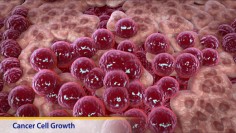
Childhood Hodgkin Lymphoma
What is childhood Hodgkin lymphoma?
Hodgkin disease is a kind of cancer that starts in the lymph system. The lymph system includes the lymph nodes, lymph vessels, and other parts of the body's immune and blood-forming systems, such as the spleen and bone marrow. The lymph system makes, stores, and carries infection-fighting white blood cells called lymphocytes. Lymph nodes and lymph vessels are located throughout the body.
Hodgkin lymphoma, also called Hodgkin disease, is one of the most curable cancers.
How does it occur?
The cause of childhood Hodgkin lymphoma is not known. There are some things that increase the risk for Hodgkin lymphoma:
- infection with Epstein-Barr virus or HIV
- other family members who have some kind of lymphoma
- a weakened immune system (such as after an organ transplant)
Hodgin lymphoma is very rare in children under the age of 5. It seems to affect boys more often than girls.
For reasons that are not known, when people have Hodgkin lymphoma their bodies make abnormal lymphocytes. These cancer cells crowd into the lymph nodes and may also invade other parts of the body. Tumors may then grow and interfere with normal body functions.
What are the symptoms?
Symptoms include:
- painless swelling of lymph nodes, in the neck, armpits, or groin
- fever
- night sweats
- weight loss for no known reason
- itching
- tiredness.
How is it diagnosed?
Your child's healthcare provider will ask about symptoms and examine your child. A sample of tissue will be taken from a swollen lymph node and examined under a microscope. This removal of a sample of tissue is called a biopsy. If your child has Hodgkin lymphoma, unusual cells called Reed-Sternberg cells will be found in the tissue.
If Hodgkin lymphoma is found, more tests will be done to learn the stage or the extent of the disease. These tests may include:
- blood tests
- chest X-rays
- CT scans of the chest and abdomen
- biopsy of the bone marrow to see if the disease has spread there.
How is it treated?
The diagnosis of Hodgkin lymphoma has 4 possible stages. The stage depends on the parts of the body the cancer has spread to. There are several types of Hodgkin disease. Treatment will depend on the type and stage of disease, as well as your child's general health.
Radiation therapy, anticancer drugs (chemotherapy), or both will be used to shrink tumors and kill cancer cells. If your child needs very high doses of chemotherapy, stem cells (young blood cells) may be taken from your child’s bone marrow or blood before treatment and kept frozen. The chemotherapy might severely damage your child’s bone marrow and its ability to make blood cells. If this happens, the blood-forming stem cells can be given back to your child after chemotherapy. This is called a stem cell transplant. Stem cells can also be given by a healthy person (donor).
Your child may be more at risk for serious infections during and after treatment.
Last modified: 2011-03-08
Last reviewed: 2011-03-08

